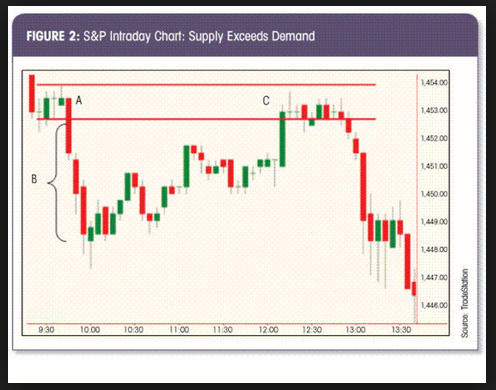Interest Coverage Ratio: Formula, How It Works, and Example

A ratio of one or more means that the company will cover its cost of debt for the year. DSC is calculated on an annualized basis – meaning cash flow in a period over obligations in the same period. This is in contrast to leverage and liquidity, which represent a snapshot of the borrower’s financial health at a single point in time (usually period end).
Is higher interest coverage ratio better?
The ratio helps to determine the safety of a company's loan, bond, or other debt obligations. The higher the interest coverage ratio, the better the company can repay its debt. A low ICR, on the other hand, indicates a high risk of default.
The Debt Service Coverage Ratio (sometimes called DSC or DSCR) is a credit metric used to understand how easily a company’s operating cash flow can cover its annual interest and principal obligations. Take the net operating income of your business and divide interest coverage ratio upsc it by your total debt obligations such as business loans. For example, if your net operating income is $100,000 and your debts total $100,000, the ratio would be 1. While debt service may be a large part of a business’s expenses, it’s not the only one.
Example of the Interest Coverage Ratio
Firms with an interest coverage ratio of higher than one and are able to meet their interest obligation from their income. Resolution of non-performing assets will need higher provisioning by banks which have seen bad loans on their books rise to around Rs 7.7 lakh crore, the report said. In most jurisdictions, income taxes owing to the regional or federal governments count as “super-priority” liabilities (meaning they rank above even the senior-most secured creditors). While most analysts acknowledge the importance of assessing a borrower’s ability to meet future debt obligations, they don’t always understand some of the nuances of the DSCR formula. Ratio analysis is a medium to understand the financial weakness and soundness of an organization. Keeping in mind the objective of analysis, the analyst has to select appropriate data to calculate appropriate ratios.
He currently researches and teaches economic sociology and the social studies of finance at the Hebrew University in Jerusalem. Ratios can be classified on the basis of financial statements or on the basis of functional aspects. And of course, just because the DSCR is less than 1 for some loans,
this does not necessarily mean they will default.
Interest Coverage Ratio Analysis
The debt service coverage ratio (DSCR), known as „debt coverage ratio“ (DCR), is a financial metric used to assess an entity’s ability to generate enough cash to cover its debt service obligations. The DSCR is calculated by dividing the operating income available for debt service by the total amount of debt service due. The debt service ratio—otherwise known as the debt service coverage ratio—compares an entity’s operating income to its debt liabilities. Expressing this relationship as a ratio allows analysts to quickly gauge a company’s ability to repay its debts, including any bonds, loans, or lines of credit. This is an especially important calculation for bankers, who may be deciding whether or not to allow a business to take on more debt. The interest coverage ratio, or times interest earned (TIE) ratio, is used to determine how well a company can pay the interest on its debts and is calculated by dividing EBIT (EBITDA or EBIAT) by a period’s interest expense.

The interest coverage ratio, like any other indicator, is used to assess a company’s efficiency. Furthermore, the acceptability of any given level of this ratio is, to some extent, in the eye of the beholder. Some banks or potential bond buyers may be willing to accept a lower ratio in exchange for a higher interest rate on the company’s debt.
Advantages of Ratio Analysis
This situation isn’t any better than the previous one, because the corporation is still unable to make the principal payments. The Debt Service Coverage Ratio (DSC) is one metric within the “coverage” bucket when analyzing a company. Other coverage ratios include EBIT over Interest (or something similar, often called Times Interest Earned), as well as the Fixed Charge Coverage Ratio (often abbreviated to FCC). The solvency ratio is an essential measure to figure out the solvency of an organization, and assess the financial condition concerning their competitors in the same industry, quantitatively. Specific aspects and numbers of the company are considered to calculate these numbers and then, the solvency is achieved. The measure has its flaws but still acts as a helpful guide for an organization’s management and financial decision-makers.
- Weak corporate credit quality has been a key reason for the build up of bad loans across banks.
- By using the solvency ratio, the measurement of cash flow capacity versus all the liabilities can be done instead of focusing on the short-term debt only.
- Staying above water with interest payments is a critical and ongoing concern for any company.
- Interest coverage, the ratio of operating profit to interest expenses, is used to determine how easily a company can service interest payments on outstanding debt.
- A bank may be more comfortable with one figure than another, depending on the required risk limitations.
For example, operating ratio, net profit ratio, gross profit ratio, stock turnover ratio. Ignoring these distinctions can lead to DSCR values that overstate or understate a company’s debt service capacity. The Pre-Tax Provision Method provides a single ratio that expresses overall debt service capacity reliably given these challenges. Interests and lease payments are true costs resulting from taking loans or borrowing assets. Paying down the principal of a loan does not change the net equity/liquidation value of an entity; however, it reduces the cash an entity processes (in exchange of decreasing loan liability or increasing equity in an asset).
Formula of Interest Coverage Ratio
This means that the net funds coming in from rental of the
commercial properties are not covering the mortgage costs. Now,
since no one would make a loan like this initially, a financial
analyst or informed investor will seek information on what the
rate of deterioration of the DSC has been. You want to know not
just what the DSC is at a particular point in time, but also how
much it has changed from when the loan was last evaluated.
[Mission 2023] INSIGHTS DAILY CURRENT AFFAIRS + PIB … – Insights IAS
[Mission 2023] INSIGHTS DAILY CURRENT AFFAIRS + PIB ….Posted: Mon, 24 Oct 2022 07:00:00 GMT [source]
Do banks have interest coverage ratio?
Potential investors or lenders (such as banks) use this ratio to assess the risks of giving you a loan. Essentially, they want to know how well you can handle your existing payments and outstanding debt before giving you money. To see how it all works, let's look at how to calculate your interest coverage ratio.